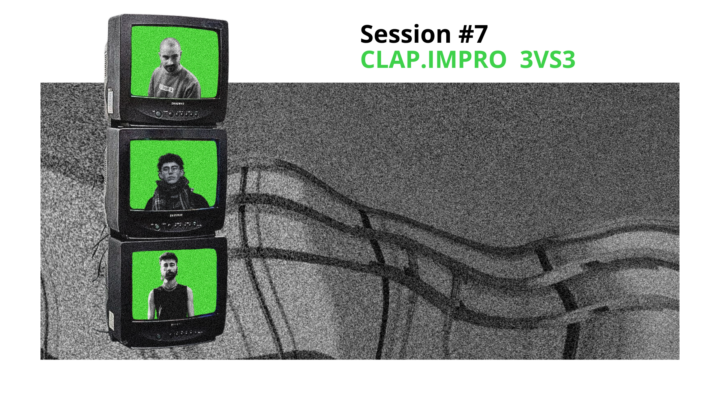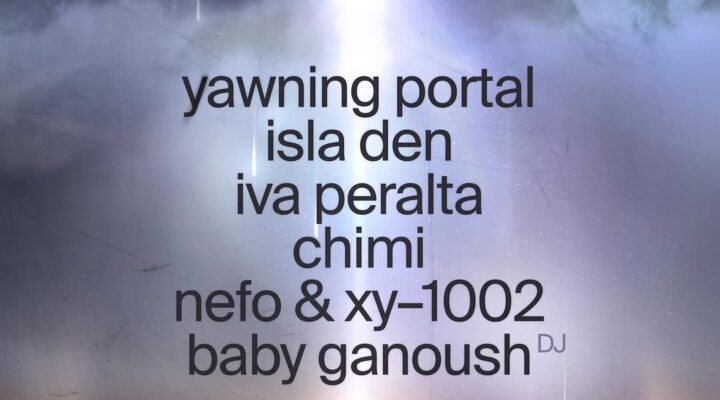Interview with Jasmine Wood
By Gabriella Meshako
To hold onto the sustain. To be enveloped by the unexpected ruptures. Multidisciplinary artist, composer, and producer Jasmine Wood creates contemporary classical ambient music that honours the in-betweens, imperfections, and their extraordinary revelations. Reverberating tones wavering, clashing, and swelling about in endless expanse.
Prior to her appearance at our beloved Cement series on 17 October during the EU tour of her latest album Piano Reverb (AD 93), we invited Jasmine to share reflections, inspirations, and top picks.
Some of the sound I managed to capture by sustaining the notes so heavily felt almost human to me.
Gabriella: On Piano Reverb, the antique Blüthner grand piano you play on was over 100 years old. How did the age and history of the instrument inform your work and process?
Jasmine: The entire concept of “Piano Reverb” erupted from the realisation that this particular piano was very unique as a result of its age. I discovered this while working on other, more traditionally structured compositions. The piano had so many of its own characteristics in how it played. I decided to work with this and try to capture it fully by sustaining the reverb of the notes, which eventually shaped my whole focus and led to the creation of the album. Some of the sound I managed to capture by sustaining the notes so heavily felt almost human to me. I worked to try and emphasise these qualities in the compositions.
G: What spaces are influential to your work and why?
J: Natural landscapes, particularly in Ireland lately – but the Pacific Northwest as well – have had a major impact on my work. I love the dramatic hillsides of Ireland. The rugged lines; a mixture of manmade stone walls and dynamic, ecological succession of bramble, manicured farmland and wind blown, crooked trees. Particularly the Kerry mountains and Connemara have both had a profound effect on me. Being from Oregon, I grew up surrounded by forests my entire life. This has definitely influenced my relationship to sound and I spend a lot of time in these spaces when I’m either writing or thinking about music.
G: How did your collaboration with Pavel Milyakov (Buttechno) on VI & VII come about?
J: I originally met Pavel as a result of his design work on the “Piano Reverb” release with AD 93. The collaboration between us came about very naturally. There’s this very specific phenomenon that occurs when I experience music by an artist that I truly resonate with. It’s like visiting the same world that I go to when I am deep in writing and recording my own music, and thinking: “wow, you know about this place too?” It’s actually hard to describe. It’s nice to work with someone where the admiration for each other’s work is mutual. I was immediately appreciative of what he contributed to my work. When I heard Pavel’s first sketch for “VII (128 bpm), I instantly thought: “yeah, that’s it”. I knew working with him on this was 100% the right decision.
G: Favourite recent musical find?
There’s this very specific phenomenon that occurs when I experience music by an artist that I truly resonate with. It’s like visiting the same world that I go to when I am deep in writing and recording my own music, and thinking: “wow, you know about this place too?”
J: I spend a lot of time looking for old folk CDs, mainly from Ireland, like rare sean-nós (Irish word for “old style”) recordings, for example. Through doing this, I’ve discovered so much interesting music that would be essentially undiscoverable if not for second hand record shops. So much of the genre would have only made it to CD, never to be digitized or even pressed on vinyl. My favourite recent find is a collection of traditional Irish songs and conversations called “Ag dul siar ar fad” (1975-1978), by Labhrás Mac Síthigh, an Irish trad singer from Dún Chaoin, Co. Kerry. The songs are a capella, an essential quality of the sean-nós style of singing, and throughout the compilation are discussions about the history of each work (spoken in Irish, so I don’t actually know what they’re saying). I’m particularly drawn to rare musical finds such as this. According to the information booklet of the CD, these songs are “no longer part of the living tradition of Irish folk music today” – many of them dating back hundreds of years.
G: Favorite spaces/sounds to capture when field recording? What are you searching for/trying to capture?
J:I have an entire library of water sounds that I’ve recorded, organised in folders by the type of water/location and tone/pitch. My favorite type of water to record is a babbling brook. If I walk past low-frequency, running water while on a walk (whether it’s in the forest or the city), I will probably start recording it. The weirdest thing I’ve ever recorded in public is probably the sound of the hum that comes from the electrical cabling boxes by the Luas (tram) stations in Dublin. I love the sound of incidentally occurring flange or tremolo and the electricity from the Luas creates both of those effects, it’s so cool.
The weirdest thing I’ve ever recorded in public is probably the sound of the hum that comes from the electrical cabling boxes by the Luas (tram) stations in Dublin.
G: Song you keep coming back to?
J: I’ve listened to “Flutes Of Doom” by Pavel Milyakov & Lucas Dupuy – (from their debut collaborative album “Heal” which is my favourite ambient album of 2025 so far) – like a hundred times this year.
G: Who is a band or artist that influences you that might be a little unexpected?
Ireland is so full of talented artists and musicians that it honestly blows my mind on a regular basis – the fact that Dublin, such a small part of the world, can be so concentrated with such a high level of talent. Mel Keane (a.k.a. Frog Of Earth) is one of my favourite artists of all time.
Nashpaints is also really amazing and has a new album coming out soon that I cannot wait for (I’ve heard it and it’s so good).
Jenn Moore is another great Dublin based musician who has released under the name Dreamcycles. Henry Earnest is also so good and an amazing producer (we are actually working together on something at the moment). Aisling-Ór Ní Aodha is an incredible vocalist that I am absolutely obsessed with.The record label Wherethetimegoes has a great discography of Dublin based experimental artists – many releases by the ones I’ve named.
There are also some great artists in Cork, like Elaine Malone, who plays in a few different projects.
I also love the record label Nyahh, based in Leitrem. They release a lot of experimental Irish music, like One Leg One Eye (another one of my favourites). I honestly could fill a whole page about my favourite Irish musicians, it’s crazy.
G: An activity that complements your music?
J: Riding the dart along the Dublin coast. I’ve written most of the lyrics for the current record I’m working on while riding the dart.
Catch Jasmine Wood and Mel Keane perform at Cement No.8 at Dokzaal on October 17th.




